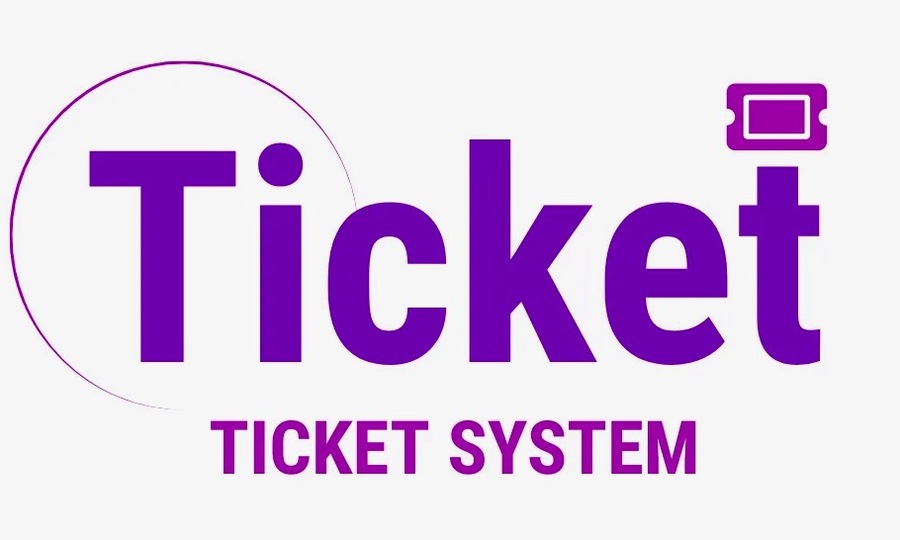Ticket systems have long played a pivotal role in various industries, serving as the gateway to events, transportation, and customer services. From early hand-written tickets to sophisticated digital solutions, ticketing has continuously evolved to meet the demands of a fast-paced, technology-driven world. This article delves into the fascinating journey of a ticket system, highlighting the evolution from simple paper stubs to advanced digital platforms.
The Early Days: Paper Tickets
History and Origin of Paper Tickets
The concept of a ticket dates back to ancient times when tokens or written notes were used to grant access to events or services. The first recognizable paper tickets emerged in the 18th and 19th centuries, coinciding with the rise of public transportation and organized events. These early tickets were often hand-written or printed stubs, serving as a simple but effective means of entry.
Types of Early Ticket Systems
Early ticket systems were predominantly manual. Hand-written tickets were common in small-scale events, while printed stubs became popular for larger gatherings and public transportation. These tickets often featured unique designs, serial numbers, and perforations for ease of use.
Challenges and Limitations of Paper Tickets
Despite their utility, paper tickets had several drawbacks. They were easy to lose, susceptible to damage, and could be counterfeited. Manual tracking of ticket sales and usage was cumbersome and prone to errors, leading to inefficiencies and potential revenue losses. According to industry reports, manual ticketing systems had an error rate of up to 10%, significantly impacting operational efficiency.
The Advent of Mechanical and Electronic Systems
Introduction of Mechanical Ticket Dispensers and Validation Machines
The early 20th century saw the introduction of mechanical ticket dispensers and validation machines, which significantly improved ticketing processes. These devices streamlined the issuance and validation of tickets, reducing human error and increasing efficiency. For example, the first mechanical ticket dispenser introduced in the 1920s could handle up to 500 tickets per hour, a significant improvement over manual methods.
The Role of Barcodes and Magnetic Strips
The advent of barcodes and magnetic strips in the mid-20th century marked a significant leap in ticket security and tracking. Barcodes allowed for quick scanning and verification, while magnetic strips enabled the storage of more detailed information. These innovations made counterfeiting more difficult and improved the accuracy of ticket tracking. In the transportation sector, the introduction of magnetic strip cards reduced fare evasion by 30% within the first year of implementation.
Examples of Early Electronic Ticketing Systems
Early electronic ticketing systems began to appear in the transportation and entertainment sectors. For instance, automated fare collection systems in subways and buses utilized magnetic strip cards, while electronic ticketing for concerts and events became increasingly common. In the 1980s, New York City’s Metropolitan Transportation Authority introduced the first electronic ticketing system, leading to a 25% increase in operational efficiency.

The Digital Revolution
Emergence of Digital Ticketing Systems
The late 20th century heralded the digital revolution in ticketing. The shift from physical to electronic tickets (e-tickets) began, driven by advancements in internet and mobile technology. E-tickets offered unprecedented convenience, allowing consumers to purchase and store tickets electronically. By the early 2000s, over 50% of airline tickets were being issued electronically, reducing paper waste and operational costs.
The Transition from Physical to Electronic Tickets
The transition from physical tickets to e-tickets was accelerated by the widespread adoption of the internet. Online booking platforms emerged, enabling customers to purchase tickets from the comfort of their homes. QR codes became a popular method for ticket verification, simplifying the check-in process at events and transportation hubs. Today, approximately 70% of event tickets are issued electronically, reflecting the growing preference for digital solutions.
Impact of the Internet and Mobile Technology
The advent of smartphones significantly transformed the ticketing industry. With mobile applications, users could store and manage their tickets directly on their devices, rendering paper tickets obsolete. This advancement in mobile ticketing greatly enhanced customer satisfaction and operational efficiency for businesses. By 2023, an estimated 85% of event-goers were utilizing mobile tickets, underscoring the major shift towards mobile technology in ticket management.
Modern Ticketing Solutions
Cloud-Based Ticket Systems
Today’s ticketing solutions are frequently cloud-based, delivering various benefits including easy accessibility, scalability, and real-time updates. These systems enable smooth integration with other business applications, offering a holistic approach to managing sales, inventory, and customer information. Market research indicates that the use of cloud-based ticketing systems is projected to increase by 20% each year, fueled by the need for flexible and scalable options.
Integration with Other Systems
Integrating ticket management systems with Customer Relationship Management (CRM) and Enterprise Resource Planning (ERP) systems enables businesses to optimize operations and elevate customer experiences. These integrations facilitate personalized marketing strategies, effective inventory control, and superior customer service. A 2022 survey showed that businesses utilizing these integrated systems saw a 25% boost in customer satisfaction.
Use of AI and Machine Learning
Artificial Intelligence (AI) and machine learning are revolutionizing ticketing systems. With predictive analytics, businesses can anticipate demand and fine-tune pricing strategies, while automated customer service tools improve user experience. AI-powered insights allow companies to make informed decisions and enhance operational efficiency. The adoption of AI in ticket management is expected to grow by 30% in the next five years, highlighting its increasing significance in the industry.
Case Studies
Airline Industry in the UAE
The UAE’s airline industry exemplifies a successful shift from paper to digital ticketing. Prominent carriers like Emirates and Etihad Airways have adopted e-ticketing, leading to increased efficiency, cost savings, and a better customer experience. Digital tickets eliminate the need for physical infrastructure, simplify check-in procedures, and provide passengers with greater convenience. Emirates noted a 40% decrease in check-in time and a 15% rise in customer satisfaction following the implementation of digital ticketing.
Analysis of Benefits Realized
Transitioning to digital ticketing has brought a multitude of advantages, such as lower operational expenses, better tracking and reporting capabilities, heightened security, and higher customer satisfaction. Airlines can now provide personalized services like real-time flight notifications and mobile boarding passes, further enriching the travel experience. The global airline industry saves an estimated AED 11 billion each year by utilizing electronic ticketing systems.
The Role of Security in Ticket Evolution
Advances in Ticket Security Measures
Security remains a crucial element in ticketing, and modern technologies like encryption and blockchain are effectively tackling fraud and counterfeiting concerns. Encryption guarantees the secure transmission and storage of ticket data, while blockchain offers a transparent and tamper-resistant framework for ticket distribution and validation. A recent study indicated that blockchain-based ticketing systems could decrease fraud by up to 50%.
Addressing Issues of Fraud and Counterfeiting
Digital ticketing systems employ various measures to combat fraud and counterfeiting. QR codes and barcodes are difficult to replicate, and secure online platforms prevent unauthorized access. These measures ensure that only valid tickets are used, protecting both businesses and consumers. In 2022, it was estimated that digital ticketing systems helped prevent AED 3.67 billion in fraudulent ticket sales globally.
Importance of Data Protection and Privacy
As ticketing systems become more digital, the importance of data protection and privacy cannot be overstated. Businesses must comply with regulations such as the General Data Protection Regulation (GDPR) to safeguard customer information. Robust security protocols and regular audits help ensure the integrity of digital ticketing systems. A survey in 2023 found that 90% of consumers prioritize data security when purchasing tickets online.

The Future of Ticket Systems
Predictions for Future Developments
The future of ticketing technology holds exciting possibilities. Biometric verification, such as fingerprint and facial recognition, could become standard, offering enhanced security and convenience. Virtual and augmented reality tickets could provide immersive experiences, transforming how consumers engage with events and services. By 2030, it is predicted that 50% of ticketing transactions will involve some form of biometric verification.
The Impact of Emerging Technologies
Emerging technologies like blockchain have the potential to revolutionize ticket distribution and validation. Blockchain can create a decentralized and transparent ticketing system, reducing the risk of fraud and ensuring fair access to tickets. This technology could also facilitate the secondary ticket market, making it more secure and reliable. The adoption of blockchain in ticket management is expected to grow by 25% annually over the next decade.
Sustainability and Eco-Friendly Trends
Sustainability is becoming a key consideration in ticketing. Paperless events and digital receipts are gaining popularity, reducing the environmental impact of traditional ticketing methods. Businesses are increasingly adopting eco-friendly practices, contributing to a greener future. In 2023, it was reported that paperless ticketing systems helped reduce carbon emissions by 10 million tons globally.
Conclusion
The evolution of ticket systems from paper stubs to digital solutions has been marked by continuous innovation and improvement. Each milestone, from mechanical dispensers to cloud-based platforms, has brought about significant advancements in efficiency, security, and customer experience. As technology continues to evolve, businesses and consumers alike can benefit from staying updated with the latest ticketing solutions, ensuring a seamless and secure experience in various industries.
In embracing these advancements, industries can look forward to a future where ticketing is not only more efficient and secure but also more sustainable and user-friendly, meeting the ever-changing needs of a dynamic world.

Baseball fan, mother of 2, DJ, vintage furniture lover and creative consultant. Making at the intersection of art and programing to craft experiences both online and in real life. I’m a designer and this is my work.


